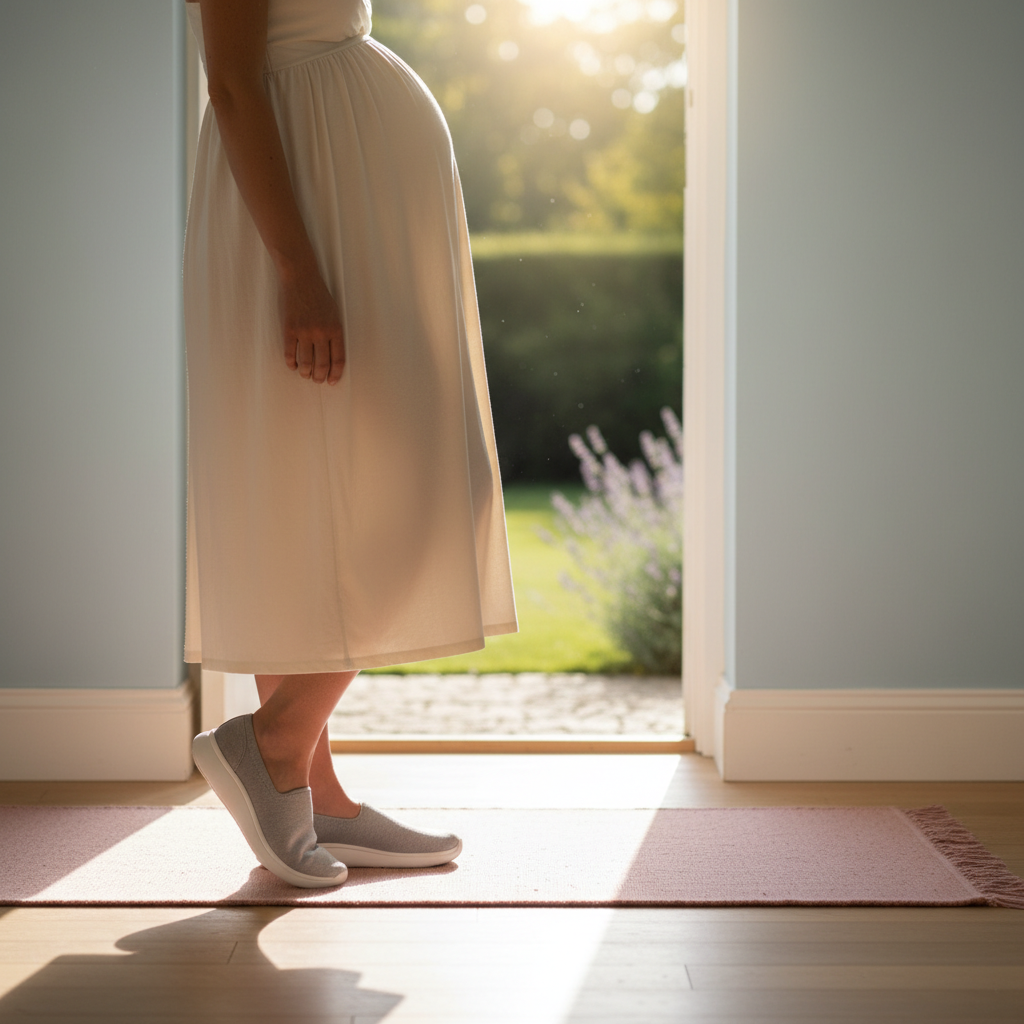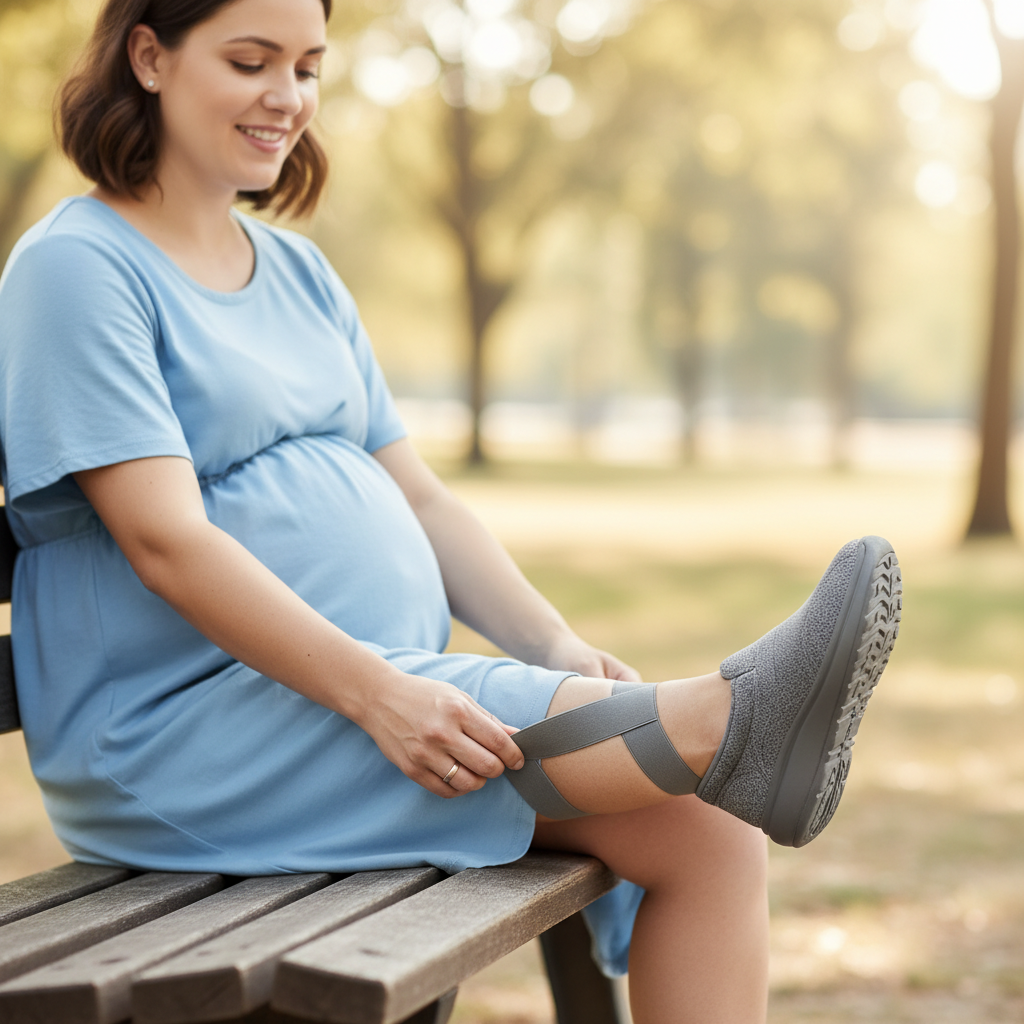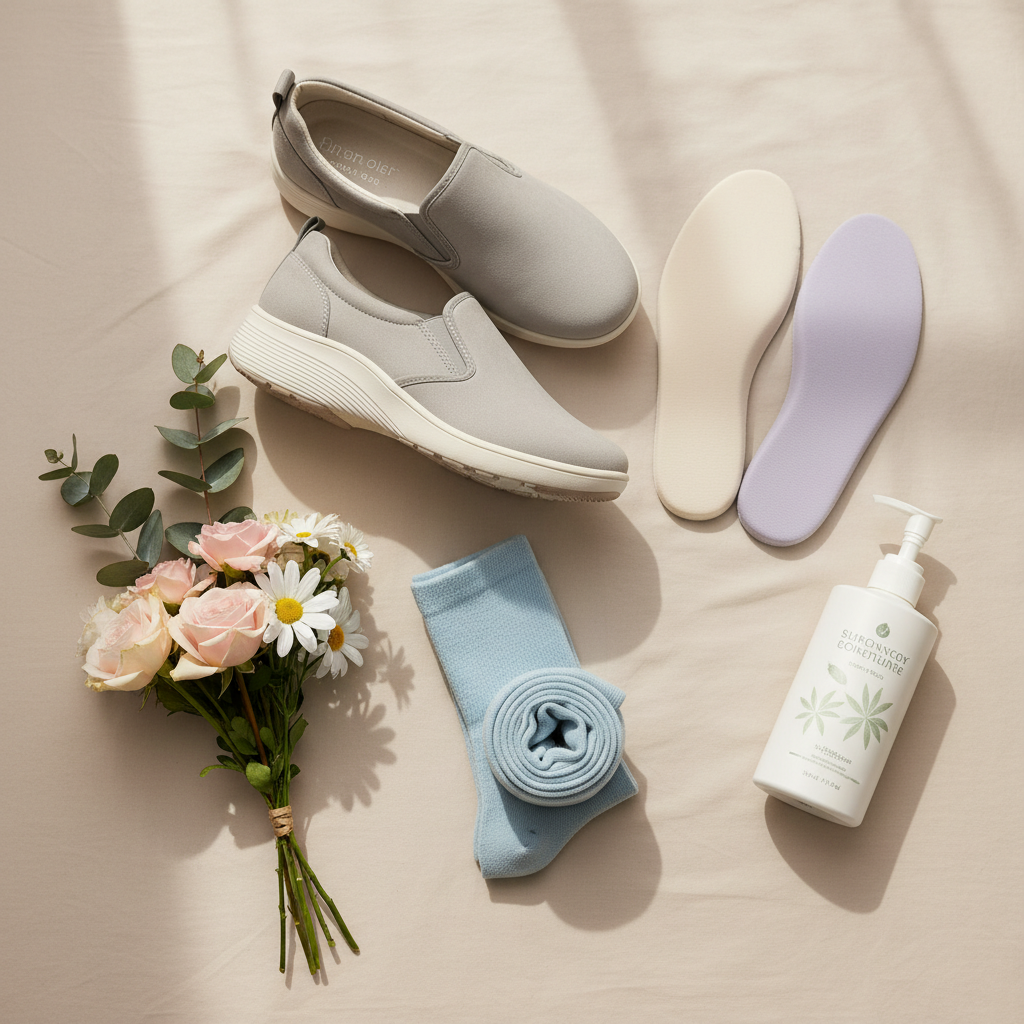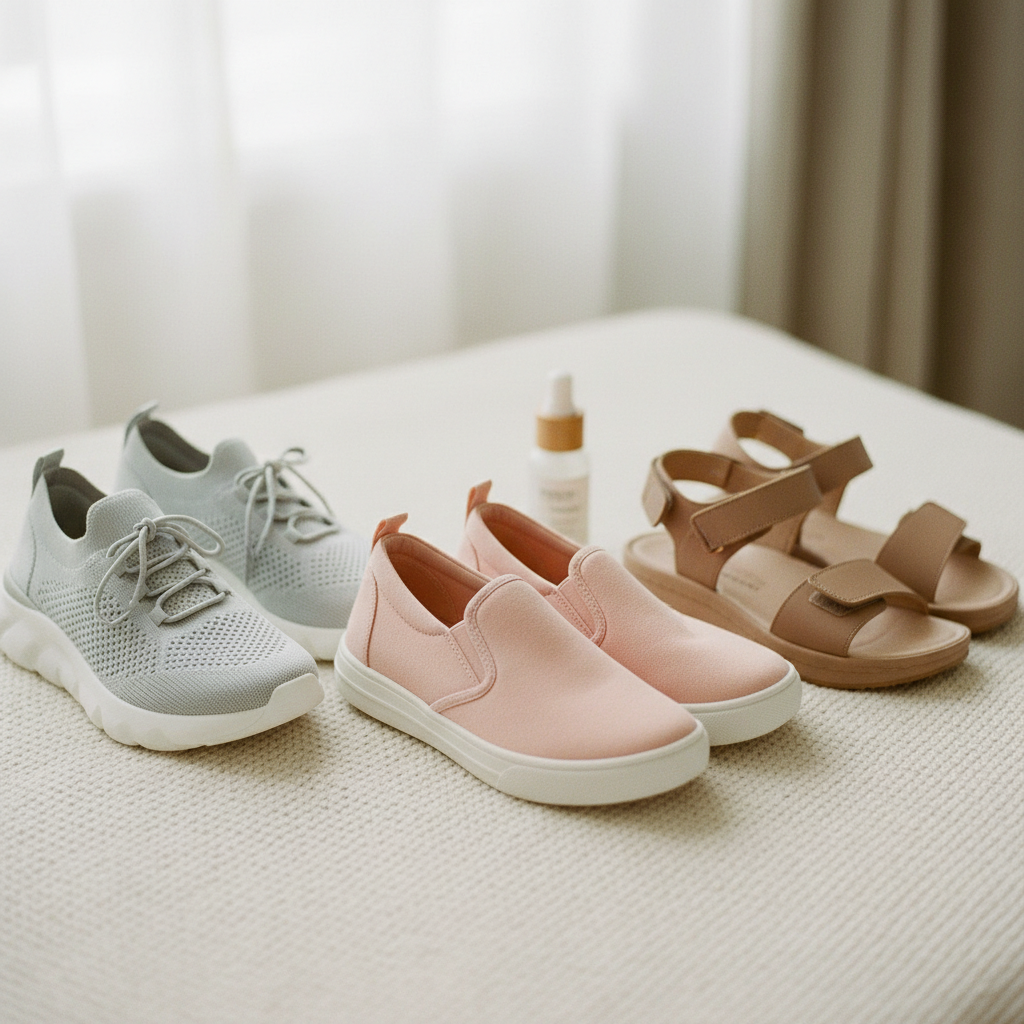
Choosing the Right Footwear for Pregnancy Support
As your pregnancy progresses, especially during the second trimester, proper footwear becomes increasingly important for comfort and safety. Your feet undergo significant changes during pregnancy that affect how your shoes fit and how comfortable you feel while walking or standing throughout the day.
Key Highlights
Here’s what you need to know about selecting pregnancy-friendly footwear:
- Feet commonly increase by a full shoe size during pregnancy due to swelling and ligament changes
- Supportive shoes with good arch support can help prevent back pain and improve balance
- Slip-on styles become particularly valuable in later pregnancy when bending becomes difficult
- Breathable materials help manage increased foot perspiration and swelling
- Flexible soles with good traction reduce fall risk as your center of gravity shifts
Understanding Foot Changes During Pregnancy

During pregnancy, your feet typically expand due to both fluid retention and the natural loosening of ligaments caused by pregnancy hormones. This expansion often begins in the second trimester when hormone levels increase and fluid retention becomes more noticeable. Many women experience not just swelling but actual structural changes to their feet, with one study from the University of Iowa finding that pregnancy can permanently widen and flatten feet.
The combination of weight gain and the hormone relaxin, which softens ligaments to prepare for childbirth, affects your entire body—including your feet. Your arches may flatten, making feet longer and wider, while increased blood volume contributes to swelling, especially toward the end of the day. These changes explain why many pregnant women find their pre-pregnancy shoes suddenly uncomfortable or even painful to wear, making appropriate footwear an essential consideration for daily comfort.
Essential Features in Pregnancy-Friendly Shoes
When shopping for pregnancy footwear, certain features matter more than others. Proper arch support becomes crucial as your feet spread and flatten, helping to maintain proper alignment and reduce strain on your back. Look for shoes with cushioned insoles that absorb shock, especially important as your weight increases and puts more pressure on your joints.
Stability features are equally important as your center of gravity shifts. Shoes with wider bases and non-slip soles help prevent falls when balance becomes challenging. According to foot health experts, pregnant women should prioritize shoes with adjustable closures (like Velcro straps or laces) that can accommodate daily fluctuations in swelling. This adaptability becomes particularly valuable as pregnancy progresses and swelling patterns change throughout the day.
Your Body’s Changing Needs

The discomfort many women experience in their feet during pregnancy isn’t just about size changes—it’s connected to whole-body biomechanics. As your belly grows, your posture shifts, placing new pressure on the feet and potentially causing back and hip pain in the second trimester. The right footwear helps create a stable foundation that supports proper alignment from the feet upward.
Many pregnant women develop pregnancy headaches second trimester, which can sometimes be linked to poor posture and muscular tension that starts with improper foot support. Podiatrists recommend replacing shoes midway through pregnancy if they no longer fit correctly, as the stress of wearing ill-fitting footwear can contribute to headaches, back pain, and increased fatigue. Consider your shoes an investment in whole-body comfort during this transformative time.
When to Replace Your Regular Shoes
Most women need to reassess their footwear by the 2nd month pregnancy mark, when subtle changes may already be affecting comfort. Signs that it’s time to switch to pregnancy-appropriate footwear include feeling pressure across the top of your foot, tightness around toes, and shoes that leave indentation marks on your feet after wearing.
Don’t wait until pain develops to make changes. According to the American College of Foot and Ankle Surgeons, wearing shoes that are too small during pregnancy can contribute to problems like plantar fasciitis, Achilles tendonitis, and even increase the risk of falls. While some women can continue wearing pre-pregnancy shoes with adjustments like loosening laces, many benefit from investing in new shoes specifically designed to accommodate pregnancy-related changes.
Practical Shoe Options for Daily Wear

For everyday wear during pregnancy, certain shoe styles offer the best combination of comfort and practicality. Supportive athletic shoes with flexible soles make excellent everyday options, providing both stability and cushioning for regular activities. Many women find that athletic shoes with mesh uppers offer the breathability and stretch needed to accommodate swelling.
Slip-on styles become increasingly valuable as pregnancy progresses and bending becomes difficult. Look for options with elastic panels that expand with your feet throughout the day. Supportive sandals with adjustable straps work well in warmer weather, while supportive flats with stretchy materials can be appropriate for more formal settings. The key is finding options that don’t require you to sacrifice support for convenience or style.
Modifying Your Footwear as Pregnancy Progresses
As your pregnancy advances, you may need to adapt your footwear strategy to maintain comfort. During the 2ns trimester, consider adding supportive inserts to shoes that fit well but lack adequate arch support. These inserts can help distribute pressure more evenly and prevent foot fatigue during long periods of standing or walking, similar to how you might safely modify workouts in the second trimester.
For persistent swelling, especially in later pregnancy, compression socks worn with roomier shoes can help manage discomfort. Some women find relief by alternating between different pairs of shoes throughout the day to change pressure points and reduce fatigue. Remember that shoes that fit in the morning might feel tight by afternoon, so having options with adjustability features becomes increasingly important as your pregnancy progresses.
Investing in Your Comfort and Safety
While it might seem temporary, investing in proper pregnancy footwear pays dividends in comfort and may help prevent issues like back and hip pain that can persist beyond pregnancy. Quality footwear supports not just your feet but your overall mobility and independence during a time when maintaining activity is important for both physical and mental well-being.
Remember that pregnancy changes are unique to each woman, and what works best for one person may not work for another. Pay attention to how your feet feel, be willing to make adjustments as needed, and prioritize function over fashion during this temporary but important time in your life. With thoughtful footwear choices, you can step through your pregnancy with greater comfort and confidence.
